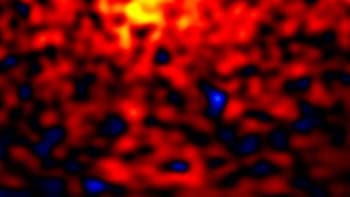By the end of the year, physicists at the DESY laboratory in Germany may have caught a glimpse of an exotic dark-matter particle known as an axion. Andreas Ringwald and co-workers are planning an experiment at the lab’s FLASH free-electron laser, a device that generates extremely bright beams of high-frequency light by accelerating electrons. The researchers will try and create axions by passing the laser light through a vacuum in the presence of a magnetic field. If they succeed, it could help physicists understand dark matter, dark energy and even why matter exists in the universe at all.
The proposed experiment at DESY follows the discovery earlier this year by the PVLAS collaboration in Italy that the polarization of a light beam through a vacuum can be rotated by setting up a magnetic field in the vacuum. According to quantum mechanics, vacuums are full of activity, with particle–antiparticle pairs continually being created and destroyed within them. Magnetic fields interact with these particles and disturb the vacuum, causing light to twist as it passes through. The PVLAS results cannot, however, be explained by standard quantum theory. This has led some scientists to hypothesize that a fraction of the photons in the experiment were converted to axion-like particles.
In the DESY experiment, the laser beam would be sent through a vacuum in the presence of a magnetic field and then into a wall. The idea is that a fraction of the laser photons will transform into the new particles, which then pass through the wall because they interact so weakly with other matter. Another magnetic field located on the other side of the wall will then transform some of these new particles back into photons – apparently regenerating photons out of nothing (arXiv.org/abs/hep-ex/0606058). Ringwald and colleagues plan to run an initial experiment towards the end of 2006, and then, if they do discover axions, carry out a second experiment to investigate the detailed properties of the particle in autumn 2007.
PVLAS spokesman Giovanni Cantatore of the University of Trieste in Italy is impressed with the DESY plans. “The proposed set-up is not limited to checking the PVLAS results, but potentially can cover a large portion of the free parameter space for axion-like particles,” he says.



